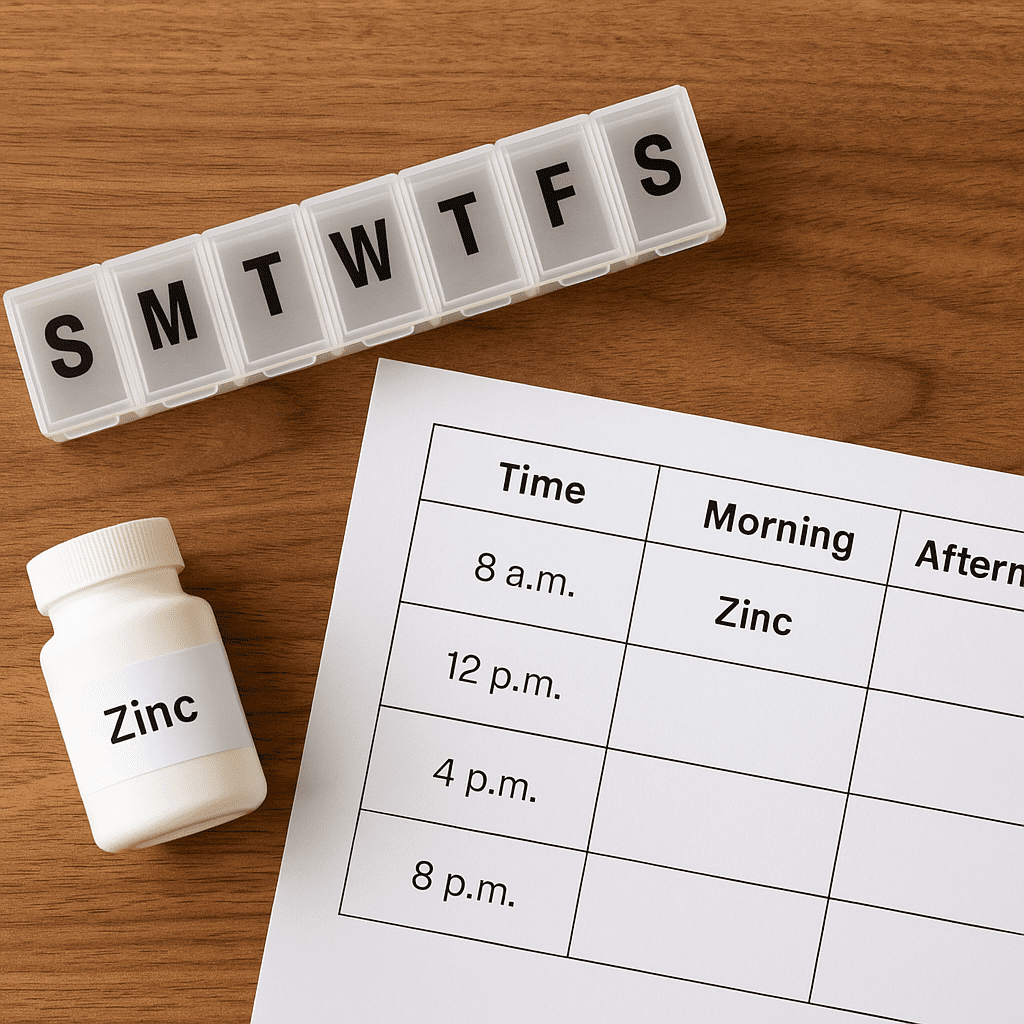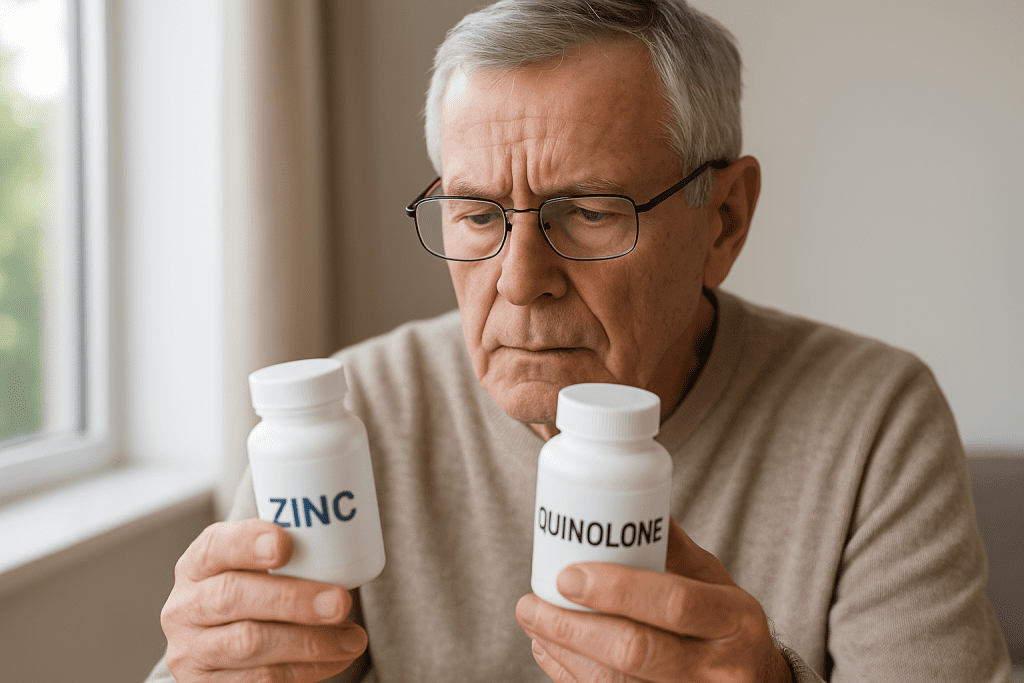When taken together, zinc and quinolone antibiotics can interact in ways that reduce antibiotic absorption and effectiveness. This zinc quinolone interaction is not just theoretical—it can lead to treatment failure, prolonged infection, or even antibiotic resistance. This guide explores the mechanisms behind the interaction, key antibiotics affected, and how to safely schedule your doses.
Summary: Zinc and Quinolone Antibiotics—What to Know
| Component | Effect When Combined with Zinc | Safe Timing Strategy |
|---|---|---|
| Ciprofloxacin | Absorption reduced up to 52% | Take 2 hours before or 6 after zinc |
| Levofloxacin | Absorption reduced 20–23% | 2 hours before or 4–6 after zinc |
| Moxifloxacin | Cmax reduced nearly 60% | 2 hours before or 6 after zinc |
- Zinc binds to quinolones, forming insoluble complexes
- Interaction applies to supplements, lozenges, multivitamins, and cold remedies
- Time separation is the most effective management
- Avoid concurrent use unless IV antibiotics are prescribed
How Zinc Interferes with Quinolone Absorption

Chelation: The Core Mechanism
Quinolone antibiotics, such as ciprofloxacin and levofloxacin, have chemical structures that readily bind to divalent cations like zinc. This creates insoluble complexes in the digestive tract, leading to poor absorption. As shown in a PubMed study, zinc can reduce ciprofloxacin’s area under the curve (AUC) by up to 52% and peak serum levels by 53%.
This isn’t just a lab phenomenon. The reduced availability can mean the antibiotic falls below its minimum effective concentration, opening the door to bacterial resistance.
Resistance Risk and Subtherapeutic Dosing
Low antibiotic levels create what’s called a “mutant selection window,” allowing bacteria to adapt. Experimental evidence from Frontiers in Microbiology found that zinc pre-exposure sped up ciprofloxacin resistance in E. coli cultures. The MIC increased 3–4x in days, undermining therapy.
Clinical Cases and Real-World Evidence
What Studies Show
- Levofloxacin: Zinc co-administration reduced bioavailability by over 20%, and even more when paired with magnesium antacids.
- Moxifloxacin: Zinc cut AUC by 39% and Cmax by nearly 60%.
- Ciprofloxacin XR: Extended-release versions require even more careful spacing—at least 6 hours.
Real-world reports, including from Drugs.com and the AAFP quinolone review, have documented treatment failures due to such interactions.
Who’s at Risk?
Some groups should be especially cautious:
- Seniors taking zinc for immunity and antibiotics for infections
- Chronic zinc users (e.g., Wilson’s disease, chronic wounds)
- Multivitamin users, often unaware of zinc content
- Patients with impaired absorption, where any reduction in efficacy is dangerous
- Immunocompromised individuals, who rely heavily on drug potency
Managing the Interaction Effectively

Timing Is Everything
- Take your quinolone antibiotic at least 2 hours before zinc
- Or wait 4–6 hours after taking zinc to use the antibiotic
- For drugs like ciprofloxacin XR: maintain at least a 6-hour window
These strategies are essential for oral quinolones. IV quinolones bypass the gut and are not affected.
Zinc-Related Alternatives and Adjustments
- Use evening zinc dosing if antibiotics are taken in the morning
- Choose zinc citrate or picolinate, which may require lower doses
- Consider switching to non-chelating antibiotics like amoxicillin if timing is impractical
- In severe cases, clinicians may prescribe IV ciprofloxacin or dual therapy
Best Practices for Patients
- Read supplement labels for hidden zinc
- Use a pill organizer or medication timing app
- Avoid taking zinc-fortified drinks or lozenges near your antibiotic
- Check out our best app for tracking vitamin and drug interactions for additional help
For people taking both probiotics and antibiotics, see our guide on probiotics and antibiotic timing guidelines.
Conclusion: Avoid the Zinc-Antibiotic Clash
The zinc quinolone interaction can quietly compromise your infection treatment. But it’s entirely avoidable. By maintaining clear time gaps and choosing formulations wisely, you can preserve antibiotic effectiveness without giving up essential supplements. This is especially important in high-risk populations and hospital settings where infection control is paramount.
For more on safe supplement combinations, see our related post on probiotics and antibiotic timing guidelines.

